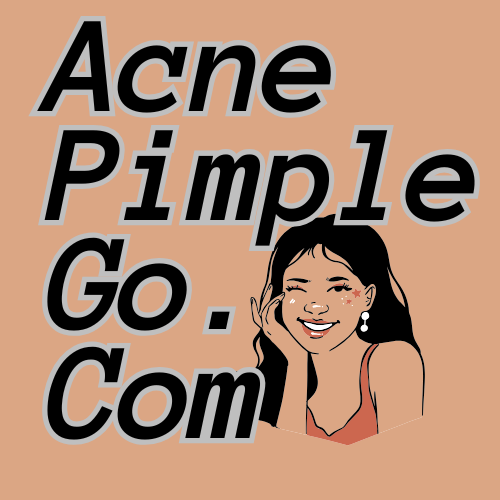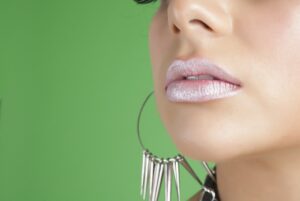Salicylic Acid vs. Benzoyl Peroxide: The Ultimate Showdown for Clearer Skin
Navigating the world of acne treatments can feel overwhelming. Walk down any skincare aisle, and you’ll be bombarded with products promising clear skin. Two ingredients consistently stand out in the fight against breakouts: Salicylic Acid (SA) and Benzoyl Peroxide (BP).
But while both are powerhouse acne fighters, they work very differently and target different types of acne. Using the wrong one for your specific skin concerns might lead to frustration, irritation, or simply ineffective results.
So, how do you know which one to choose? Let’s break down the differences between Salicylic Acid and Benzoyl Peroxide to help you decide which ingredient might be the hero your skin needs.
What is Salicylic Acid (SA)? The Pore Decongestant
Salicylic Acid belongs to a class of ingredients called Beta Hydroxy Acids (BHAs). What makes BHAs special? They are oil-soluble.
- How it Works: Because SA loves oil, it can penetrate deep into your pores, dissolving the mixture of dead skin cells and sebum (oil) that creates clogs. Think of it as a deep-cleaning agent working inside the pore lining. It also has mild anti-inflammatory properties.
- Best For: Salicylic Acid excels at treating comedonal acne. This includes:
- Blackheads: Open clogged pores where the trapped sebum has oxidized.
- Whiteheads: Closed clogged pores.
- Mild pimples and general skin congestion.
- Potential Side Effects: While generally well-tolerated, SA can cause dryness, slight peeling, or irritation, especially when first starting or if overused.
- Found In: Cleansers, toners, serums, spot treatments, masks, and peels. Concentrations typically range from 0.5% to 2% in over-the-counter (OTC) products.
What is Benzoyl Peroxide (BP)? The Bacteria Killer
Benzoyl Peroxide is an antimicrobial agent that works in a couple of key ways to combat acne.
- How it Works: BP releases oxygen into the pore, creating an environment where the primary acne-causing bacteria (Propionibacterium acnes or P. acnes, now known as Cutibacterium acnes) cannot survive. It effectively kills the bacteria contributing to inflammation. It also helps to peel the skin slightly, aiding in clearing blockages.
- Best For: Benzoyl Peroxide is the go-to for inflammatory acne. This includes:
- Papules: Small, red, tender bumps.
- Pustules: Pimples containing pus.
- It can also be helpful as part of a routine for moderate to severe acne, including some cysts and nodules (though severe forms often require dermatologist care).
- Potential Side Effects: BP is known for being potentially more drying and irritating than SA. Redness, peeling, and dryness are common. A notable side effect is its ability to bleach fabrics (like towels, pillowcases, and clothing), so be careful!
- Found In: Cleansers, creams, gels, lotions, and spot treatments. OTC concentrations typically range from 2.5% to 10%. Starting with a lower concentration (2.5% or 5%) is often recommended.
Salicylic Acid vs. Benzoyl Peroxide: Key Differences at a Glance
| Feature | Salicylic Acid (BHA) | Benzoyl Peroxide |
|---|---|---|
| Primary Action | Exfoliates inside pores, dissolves oil & debris | Kills acne-causing bacteria (C. acnes) |
| Best For | Blackheads, whiteheads, clogged pores | Inflammatory pimples (red bumps, pustules) |
| Solubility | Oil-Soluble | Not oil-soluble (works on surface/in pore) |
| Key Benefit | Decongests pores | Reduces bacteria & inflammation |
| Common Side Effect | Potential dryness/irritation | Dryness, peeling, redness, fabric bleaching |
Export to Sheets
Can You Use Both Salicylic Acid and Benzoyl Peroxide?
Yes, some people find success using both ingredients, but caution is essential. Using them together improperly can lead to significant irritation, redness, and excessive dryness, compromising your skin barrier.
If you want to incorporate both:
- Alternate Days: Use a Salicylic Acid product one day and a Benzoyl Peroxide product the next.
- Use at Different Times: Use one ingredient in your morning routine and the other in your evening routine (e.g., SA cleanser AM, BP spot treatment PM).
- Use on Different Areas: If you have blackheads on your nose and inflammatory pimples on your chin, you might use SA on your nose and BP on your chin (spot treat carefully).
- Start Slow & Patch Test: Introduce one new product at a time and always patch test first.
- Prioritize Hydration: Ensure you’re using a good, non-comedogenic moisturizer and sunscreen daily to combat potential dryness and protect your skin.
- Consult a Pro: If unsure, it’s always best to consult a dermatologist or licensed esthetician.
Which One Should YOU Choose?
Here’s a simple guide:
- If your main concern is blackheads, whiteheads, and generally clogged pores: Start with Salicylic Acid.
- If your main concern is red, inflamed pimples and pustules: Benzoyl Peroxide is likely a better first choice. Start with a low concentration (2.5% or 5%).
- If you have a mix of both: You might try one ingredient first and see how your skin responds, or carefully consider alternating/using both as described above, ideally after consulting a professional.
The Takeaway
Both Salicylic Acid and Benzoyl Peroxide are effective acne-fighting ingredients, but they aren’t interchangeable. Understanding their unique mechanisms helps you choose the right product for your specific type of acne. Remember to introduce new active ingredients slowly, patch test, moisturize well, use sunscreen, and be patient – achieving clearer skin takes time and consistency!
Disclaimer: The information on this website is for informational purposes only and does not constitute medical advice. Always consult with a qualified healthcare 1 professional or dermatologist for any health concerns or before making any decisions related to your health or treatment.

